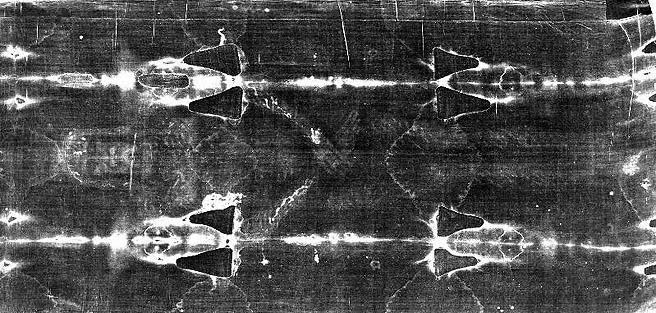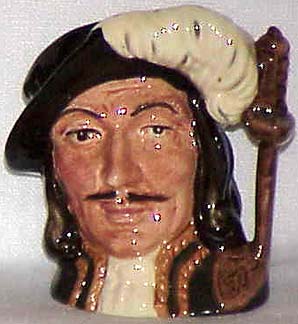 From Bishop Victor Galeone of Saint Augustine, Florida:
From Bishop Victor Galeone of Saint Augustine, Florida: “He was crucified under Pontius Pilate…”
“He was crucified under Pontius Pilate…”We pray these words of the creed so glibly that their meaning often escapes us. They state that Jesus – God’s eternal Son who became one of us – died like a common criminal. Since God cannot suffer, God the Son took on our mortal nature so that he could suffer. The one who suffers is a person (“My tooth is killing me”). Since there is only one person in Jesus of Nazareth – a divine person – it means that he, God, experienced excruciating pain. Utilizing the Shroud of Turin, I would like us to consider just how excruciating that pain was.
The Shroud of Turin
The Holy Shroud is a 14-foot linen cloth with the frontal and dorsal image of a nude man who appears to have been physically traumatized by crucifixion. It is kept in the royal chapel of the Cathedral in Turin, Italy. Composed of faint shades of brown, the image is barely visible to the naked eye.
The existence of the shroud can be historically traced to France, where it was in the possession of Geoffroi de Charney in the year 1357. The Knights Templar allegedly came into possession of the shroud in the sack of Constantinople during the Fourth Crusade. Prior to that, it was identified with the Image of Edessa, dating back to the fourth century. John’s gospel refers to the burial cloths of Jesus, which Peter and John discovered on entering the tomb on Easter morning.
In 1898, Secondo Pia, an amateur photographer, was allowed to photograph the shroud for the first time as part of a rare exhibit in the Turin Cathedral. Later, developing the negative in his darkroom, he almost dropped the photographic glass plate – so shocked was he to see the image of a face on it. His negative was in fact a “positive” image of the brown shadows on the shroud. In other words, the entire image on the shroud is a negative, with the exception of the bloodstains. Furthermore, it is not a painting. Various experts testing the shroud detected no pigments. The image is the result of a scorch on the surface of the linen, similar to a burn mark left on a shirt from an overheated iron.
The Shroud and Carbon-14 dating
In 1988, the Vatican granted permission for specimens of the shroud to be tested via carbon-14 analysis by three universities to ascertain its age. The results dated the shroud between the years 1220 and 1390. However, more recent research shows that the material used in the 1988 analysis was cut from a medieval patch woven into one end of the shroud to repair damage caused by a 1532 fire. “The radiocarbon sample has completely different chemical properties than the main part of the shroud relic,” said Raymond Rogers, a retired chemist from the Los Alamos National Laboratory in New Mexico. To date, the Vatican has not permitted a new analysis.
Read more …









No comments:
Post a Comment